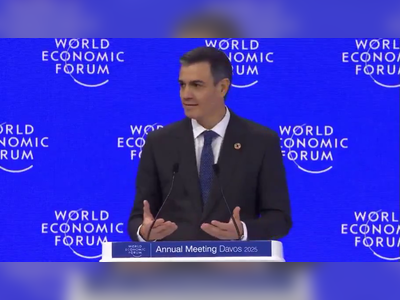Trump Implements Executive Orders to Extend Lifespan of Coal-Fired Power Plants
New measures aim to revive the coal industry amid increasing demands for electricity from emerging technologies.
On Tuesday, former President Donald Trump signed four executive orders designed to revive the coal industry, a sector that has faced significant declines and scrutiny due to its contributions to greenhouse gas emissions and environmental pollution.
The actions come in response to the growing demand for electricity, driven by advancements in datacenters, artificial intelligence, and the increasing adoption of electric vehicles.
The orders were announced in a White House event attended by miners, with Trump emphasizing a commitment to dismantle regulatory barriers that he claims hinder coal production.
He stated that the executive orders would facilitate quicker coal mining operations and remove perceived governmental biases against the coal sector.
The first executive order mandates that all federal departments eliminate policies that have discriminated against the coal industry.
This includes lifting a leasing moratorium on federal coal and expediting funding for coal-related projects.
The second order seeks to halt policies introduced by the Biden administration that the Trump administration deems unscientific and damaging to the current operation of coal-fired power plants.
The third order is focused on enhancing grid security, asserting that energy policies should prioritize reliability and effective energy production over what Trump described as 'woke' policies detrimental to coal and other fossil fuels.
The fourth order instructs the Department of Justice to investigate what Trump characterizes as unconstitutional policies from states perceived to be discriminating against coal.
These actions represent a stark departure from the climate and energy policies pursued by former President Joe Biden, who implemented regulations aimed at significantly reducing carbon emissions from coal plants.
Biden's policies had led to predictions of a potential steep decline in coal use, a trend exacerbated by the economic competitiveness of natural gas and renewable energy sources like wind and solar.
While Trump envisions a resurgence in coal's role in meeting energy needs, energy experts suggest that any increase in coal production under these orders may be short-lived, with the broader market dynamics favoring renewables and natural gas.
In 2023, projections indicated that over 90% of new electricity generation capacity in the United States would stem from solar, wind, and battery systems, further highlighting the challenges facing the coal sector.
Environmental advocates expressed concerns regarding the executive orders, labeling coal as an outdated and less competitive energy source.
Some pointed to research showing that maintaining the current coal fleet is often more costly than transitioning to renewable energy solutions.
In a statement, experts from various environmental groups criticized the orders as a regressive step in energy policy, while highlighting the affordability and sustainability of clean energy alternatives in the current market.
The actions come in response to the growing demand for electricity, driven by advancements in datacenters, artificial intelligence, and the increasing adoption of electric vehicles.
The orders were announced in a White House event attended by miners, with Trump emphasizing a commitment to dismantle regulatory barriers that he claims hinder coal production.
He stated that the executive orders would facilitate quicker coal mining operations and remove perceived governmental biases against the coal sector.
The first executive order mandates that all federal departments eliminate policies that have discriminated against the coal industry.
This includes lifting a leasing moratorium on federal coal and expediting funding for coal-related projects.
The second order seeks to halt policies introduced by the Biden administration that the Trump administration deems unscientific and damaging to the current operation of coal-fired power plants.
The third order is focused on enhancing grid security, asserting that energy policies should prioritize reliability and effective energy production over what Trump described as 'woke' policies detrimental to coal and other fossil fuels.
The fourth order instructs the Department of Justice to investigate what Trump characterizes as unconstitutional policies from states perceived to be discriminating against coal.
These actions represent a stark departure from the climate and energy policies pursued by former President Joe Biden, who implemented regulations aimed at significantly reducing carbon emissions from coal plants.
Biden's policies had led to predictions of a potential steep decline in coal use, a trend exacerbated by the economic competitiveness of natural gas and renewable energy sources like wind and solar.
While Trump envisions a resurgence in coal's role in meeting energy needs, energy experts suggest that any increase in coal production under these orders may be short-lived, with the broader market dynamics favoring renewables and natural gas.
In 2023, projections indicated that over 90% of new electricity generation capacity in the United States would stem from solar, wind, and battery systems, further highlighting the challenges facing the coal sector.
Environmental advocates expressed concerns regarding the executive orders, labeling coal as an outdated and less competitive energy source.
Some pointed to research showing that maintaining the current coal fleet is often more costly than transitioning to renewable energy solutions.
In a statement, experts from various environmental groups criticized the orders as a regressive step in energy policy, while highlighting the affordability and sustainability of clean energy alternatives in the current market.












